Simile and Metaphor
Similes and metaphors are the two most common types of figurative language in the English language.
Click Here for Step-by-Step Rules, Stories and Exercises to Practice All English Tenses
Similes and metaphors both compare two different things that do not usually go together. The difference between them is that a simile uses the words "like" or "as" and a metaphor does not.
with like/as => simile
without like/as => metaphor
Similes and metaphors are very common in speaking, singing, and writing. Similes and metaphors are often used in stories, music, and poetry to create good descriptions.
Reasons to use similes and metaphors:
- for comparison
- for emphasis or stress
- for humor
- to make something clear or easy to understand
- to say something in a new way
- to help the reader/listener form a picture in their mind
- to make something interesting and descriptive

Simile
A simile is a word or phrase that compares something to something else. It uses the words like or as.Examples of similes:
- eat like a pig
- sleep like a baby
- as cute as a kitten
- as white as snow
Similes are the most common type of figurative language in the English language.
Similes
compare
two different things that do not usually go together.
Similes compare using the words "like" or "as."
Similes compare using the words "like" or "as."
How to form a simile
There are two ways to form a simile.This is a list of some common similes. Add a subject to the beginning of each simile to make the sentence complete. There are some examples below.
Pattern 1: as + adjective/adverb + as + noun
- as cold as ice.
- as white as snow
- as gentle as a lamb
- as funny as a clown
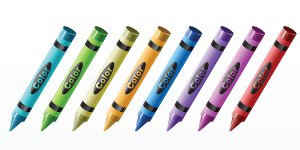
- as light as a feather
- as colorful as a rainbow
The crayons are as colorful as a rainbow.
- as slow as a turtle
- as pretty as a flower
- as tall as a giant
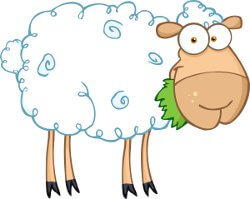
- as quiet as a mouse
- as fluffy as cotton candy
The sheep was as fluffy as cotton candy.
- as wise as an owl
- as hungry as a bear
- as tough as nails
- smells like a rose
- eats like a pig
- sings like an angel
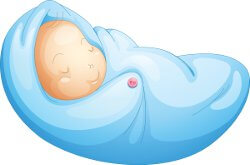
- runs like a cheetah
- slept like a baby
I slept like a baby last night.
- crying like a baby
- jumps like a frog
- howls like a dog
- sparkles like a diamond
- roared like a lion
Metaphor
A metaphor is a comparison of two different things, without "like" or "as." It makes a description more interesting or powerful.The word "metaphor" comes from the Latin word metaphoria and the Greek word metapherin. Both of these words mean "to transfer." A metaphor gives (transfers) qualities from one noun to another noun.
Examples of metaphors:
- wooden face (= a face as stiff as wood)
- army of letters (= letters as great in amount and as powerful as an army)
- sea of sadness (= sadness as huge and endless as the sea)
- My plan was a house of cards (= as fragile and unstable as a house of cards)
A metaphor compares things by stating something IS something else.
How to form a metaphor
There are a few ways to make a metaphor.The simplest way to make a metaphor is to use this pattern:
First noun + to
be verb + a/an + second
noun
- She is an angel.
(She is a nice.)
- My hands are ice.
(My hands feel very cold.)
- He is a pig.
(He is messy.)
- Her eyes were diamonds.

(Her eyes were beautiful.)
- The shark's
teeth are daggers.
(The shark's teeth are sharp.)
- The stars were a blanket over the earth.
(The stars filled the night sky above the earth.)
- The wind was a piercing arrow.
(It was windy and very cold.)
- The jet was a bolt of lightning shooting across the sky.
(The jet flew fast across the sky.)
- The classroom
was a zoo.
(The classroom was noisy and the kids are not in their seats.)
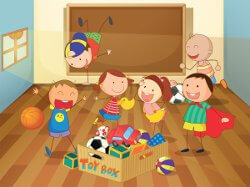
Not all metaphors are written in the simple pattern like those above.
Here are a few more examples of metaphors. Even though they are not written in the same pattern, they do compare two different nouns.
- My boss fired the snake.
(The employee is being compared to a snake. The boss fired an employee who was sneaky and not trustworthy.)
- He has a heart
of stone.
(His heart is being compared to a stone. He is angry and mean.)
- The bride wore a dress of snow.
(The dress is being compared to snow. The dress is soft and white.)
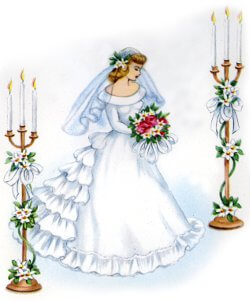
In addition, you can form a metaphor with verbs and adjectives.
- A flock
of children went to the circus.
(A flock is a group of birds. Children are being compared to birds.)
- The investigator digs up
evidence about the crime.
(The investigator is looking for evidence. He is being compared to a dog who digs up bones.)

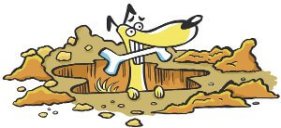
Simile
vs metaphor
People often confuse similes and metaphors. They are very similar
because they both compare two different things. With similes, the comparison is easy to understand.
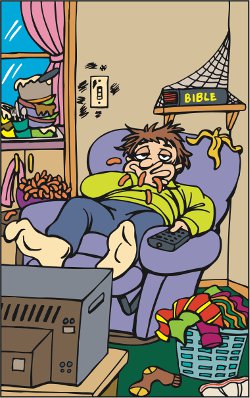
Sam eats like a pig.
This simile compares the way Sam eats to the way a pig eats. Sam is very messy when he eats. He does not have good manners.
Sam's house is as dirty as a pigsty.
This simile compares Sam's home to a pigsty (where pigs live). It means that Sam's home is very messy. He probably does not clean often and leaves dirty clothes on the floor.
A metaphor is not always as easy to understand and can sometimes be understood in different ways by different people or in different situations.
Sam is a pig.
This metaphor does not mean Sam is actually a pig.
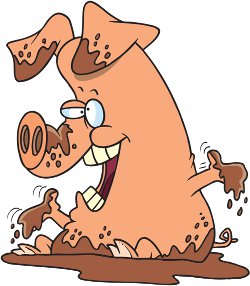
This sentence can have different meanings depending on the context. We can usually figure out the meaning based on a picture or context of the paragraph or story.
In our example, "Sam is a pig" it could mean different things, since pigs can have different qualities. For example, they can be dirty or greedy (eating everything).
"Sam is a pig" could mean:
- Sam is a messy
eater. He does not have good manners.
- Sam is a sloppy
dresser. His clothes are dirty.
- Sam has a messy
house. He does not clean his house.
- Sam acts
very rude. He is not polite.
- Sam is greedy. He takes everything.
Similes and metaphors in poetry
Here is a great example of similes and metaphors being used in classic poetry. Read this short poem to see if you can spot the similes or metaphors. Then scroll past the picture for the answers.New words:
flint = a very hard gray stone used to make fireemerald = a beautiful green stone
ruby = a beautiful dark red stone
sapphire = a beautiful blue stone
heaven = sky
brilliant = very bright
opal = a beautiful stone that shows changing colors
hold = have or contain
fiery = of fire
Flint
(by Christina Rossetti)
An emerald is as green as grass,
A ruby red as blood;
A sapphire shines as blue as heaven;
A flint lies in the mud.
A diamond is a brilliant stone,
To catch the world's desire;
An opal holds a fiery spark;
But a flint holds a fire.
(by Christina Rossetti)
An emerald is as green as grass,
A ruby red as blood;
A sapphire shines as blue as heaven;
A flint lies in the mud.
A diamond is a brilliant stone,
To catch the world's desire;
An opal holds a fiery spark;
But a flint holds a fire.
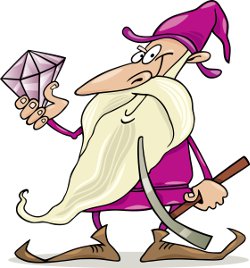
Similes and Metaphors
(answers)
An emerald is as green as grass,
(an emerald is green and grass is green)
A ruby red as blood;
(a ruby is red and blood is red)
A sapphire shines as blue as heaven;
(a sapphire is blue and the sky, or heaven, is blue)
A flint lies in the mud.
A diamond is a brilliant stone,
To catch the world's desire;
(the diamond is being compared to something that can catch something, such as a baseball glove)
An opal holds a fiery spark;
(the opal looks like a spark of fire)
But a flint holds a fire.
(the flint is being compared to an object that can contain something else)
This was an overview of similes and metaphors. Now that you understand, it is time to practice! Get our ESL Books.
Get Updates, Special Offers, and English Resources
Download your FREE GIFT (the first two chapters of
English Short Stories Book and Workbook)
as soon as you join!

By submitting your email, you consent to receiving updates and newsletters from us and to the sharing of your personal data with third parties for the purposes of sending you communications. We will not spam you. You can unsubscribe at any time. For more information, please see our privacy policy.





